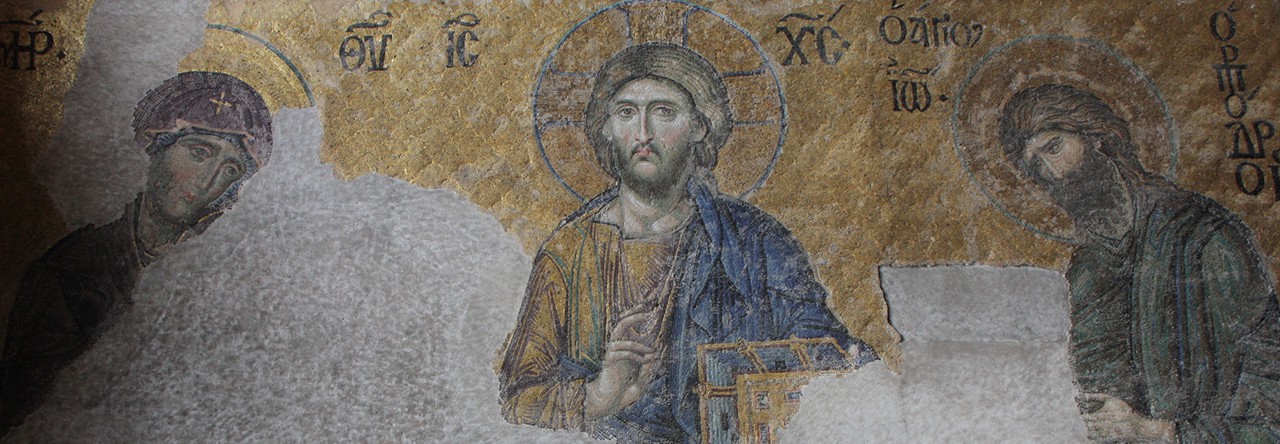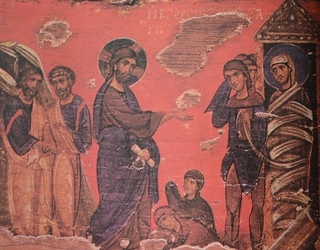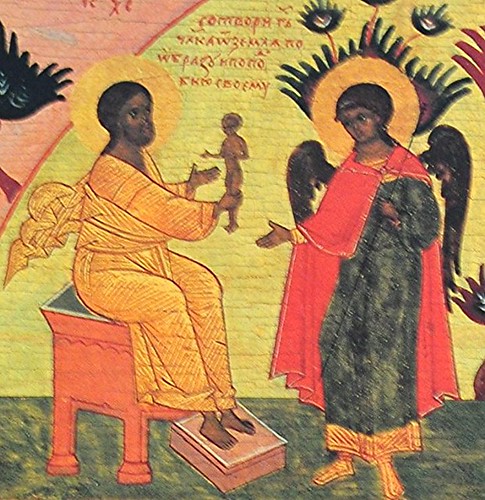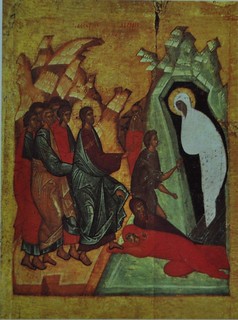Our sojourn into Holy Week begins with the sad news that Jesus’ friend Lazarus has died. In the Gospel account we see the grief not only of Martha and Mary, the sisters of Lazarus, but of Jesus himself who weeps at the tomb of his friend (John 11:1-45). Any of us who have suffered the loss of a friend or family member, or even a pet, know the sting of death.

Yes, I know that the kingdom of God is to come, or at least I hope and believe in that. Somehow my life is still directed by that faith. And yet, we have those wonderfully happy days in this life that suddenly or slowly come to an end. Is it not sad, always? We cannot stop the events of life, nor all that is disappearing. The tonality is very Christian, because this brokeness in time and space, the impossibility of repealing the iron law of aging, our faculties’ decline into weakness and senility, is the sad reality of this world. And therefore the lamentation, the fear and sorrow on all those levels, have their place. It is our own eternal crying with Christ, who heard about his friend, the one whom Martha said: “Lord, don’t approach! He has been dead four days, and he stinks.” We listen to that “he stinks” in the light of the first description of man uttered by God: “And God saw it was very good.” Now that “very good” lies there in decomposition. (Alexander Schmemann, The Liturgy of Death, pp. 166-167)

As people of faith we should not cringe from death since we believe God is the Lord of the living and the dead: “If we live, we live to the Lord, and if we die, we die to the Lord; so then, whether we live or whether we die, we are the Lord’s. For to this end Christ died and lived again, that he might be Lord both of the dead and of the living” (Romans 14:8-9). Yet, death has a sting to it which brings us heart-rending grief. And, as Fr. Schmemann notes above, not only does it have a sting, but a stink. We use funeral homes to sanitize our funerals to remove the stench of death, but when Jesus came to the tomb of his friend Lazarus, he was warned that the foul odor of death was already there. Jesus Christ has overcome death – both its stink and sting – and that is the faith we affirm as we prepare ourselves for His crucifixion and burial.

In this regard we think of Christ’s dialogue with Martha in the Gospel according to John. Christ asked her: “Do you believe that your brother shall rise from the dead?” “Of course I believe it,” she said, “he will rise on the last day” (Jn. 11:24). The Lord however was not satisfied with her answer; not that what she said was incorrect, but because she had failed to understand the question. So Christ says to her: “I am the resurrection and the life (Jn. 11:25). I am the source and cause of resurrection, or rather I am myself the resurrection of your brother. There’s no need to wait until the “last day” for your brother to rise. Your brother is already risen, for I am the resurrection; Your brother lives, for I am the life of the world” (Jn 11:25; 14:6). It is one thing to say that “Lazarus will be resurrected” and another thing entirely to confess that the resurrection is Christ Himself.
Something similar is happening here. The Lord does not simply provide me with refuge, but He Himself is my refuge (cf. Pss 18:2; 31:1-4). (Archimandrite Aimilianos, Psalms and the Life of Faith, p. 137-138)
Jesus said: “I have said this to you, that in me you may have peace. In the world you have tribulation; but be of good cheer, I have overcome the world” (John 16:33). While we know Holy Week is headed to the arrest, torture and execution of our Jesus Christ, our faith is in the Lord who has overcome the world.



 Holy Week
Holy Week


















 19:46), in a quotation from Jeremiah criticizing the Jerusalemites for making out of the temple a ‘cave’ of robbers (Jer. 7:11 translated ‘den’ in the RSV). Thus, when the dead Jew ‘comes out’ of his cave, he symbolically ‘comes out’ of Judaism (Jn. 11:43-44). Nevertheless, the salvation of the Jews is part and parcel of the salvation of all, and so the periscope about
19:46), in a quotation from Jeremiah criticizing the Jerusalemites for making out of the temple a ‘cave’ of robbers (Jer. 7:11 translated ‘den’ in the RSV). Thus, when the dead Jew ‘comes out’ of his cave, he symbolically ‘comes out’ of Judaism (Jn. 11:43-44). Nevertheless, the salvation of the Jews is part and parcel of the salvation of all, and so the periscope about O Word of God,
O Word of God,